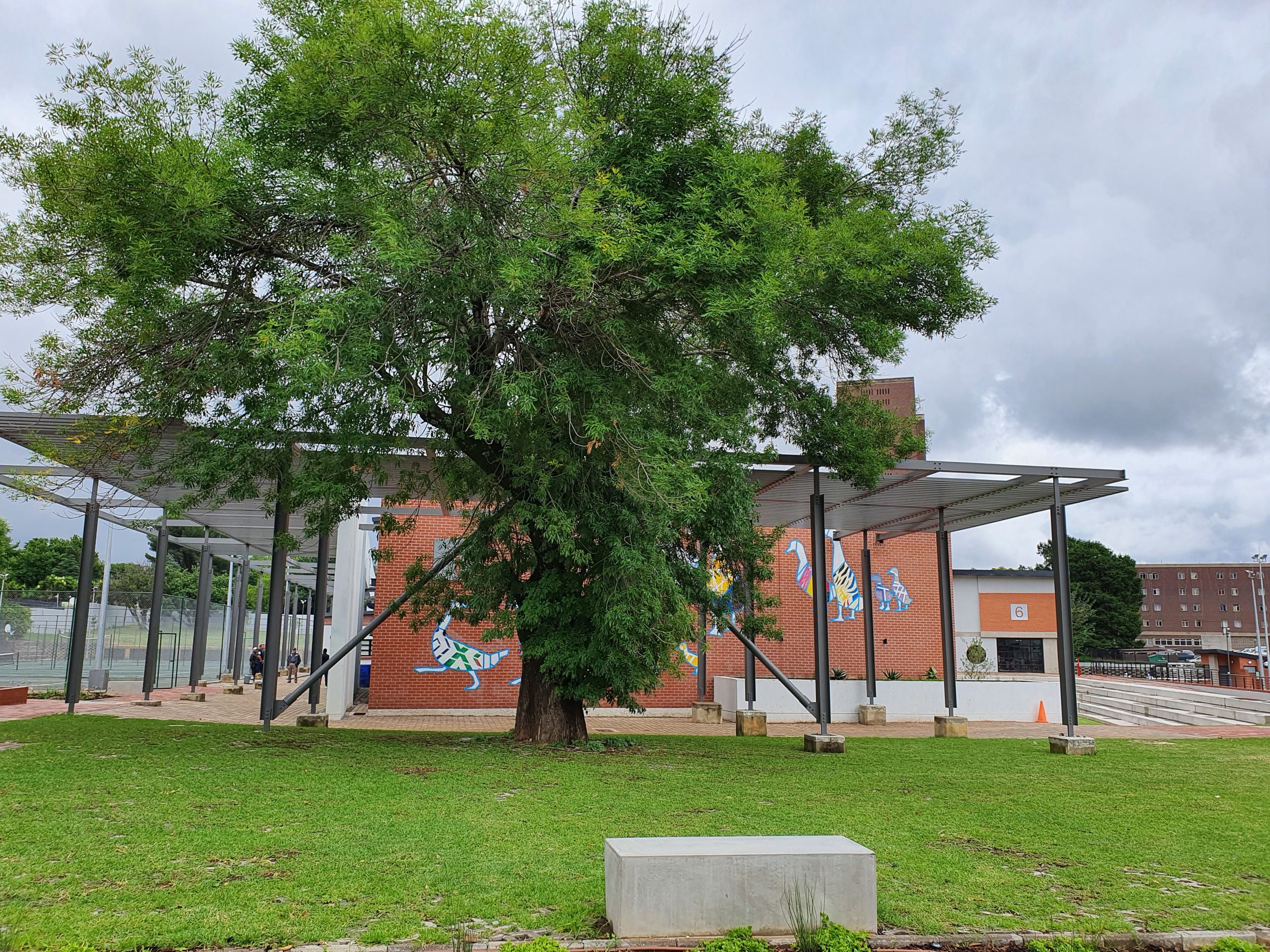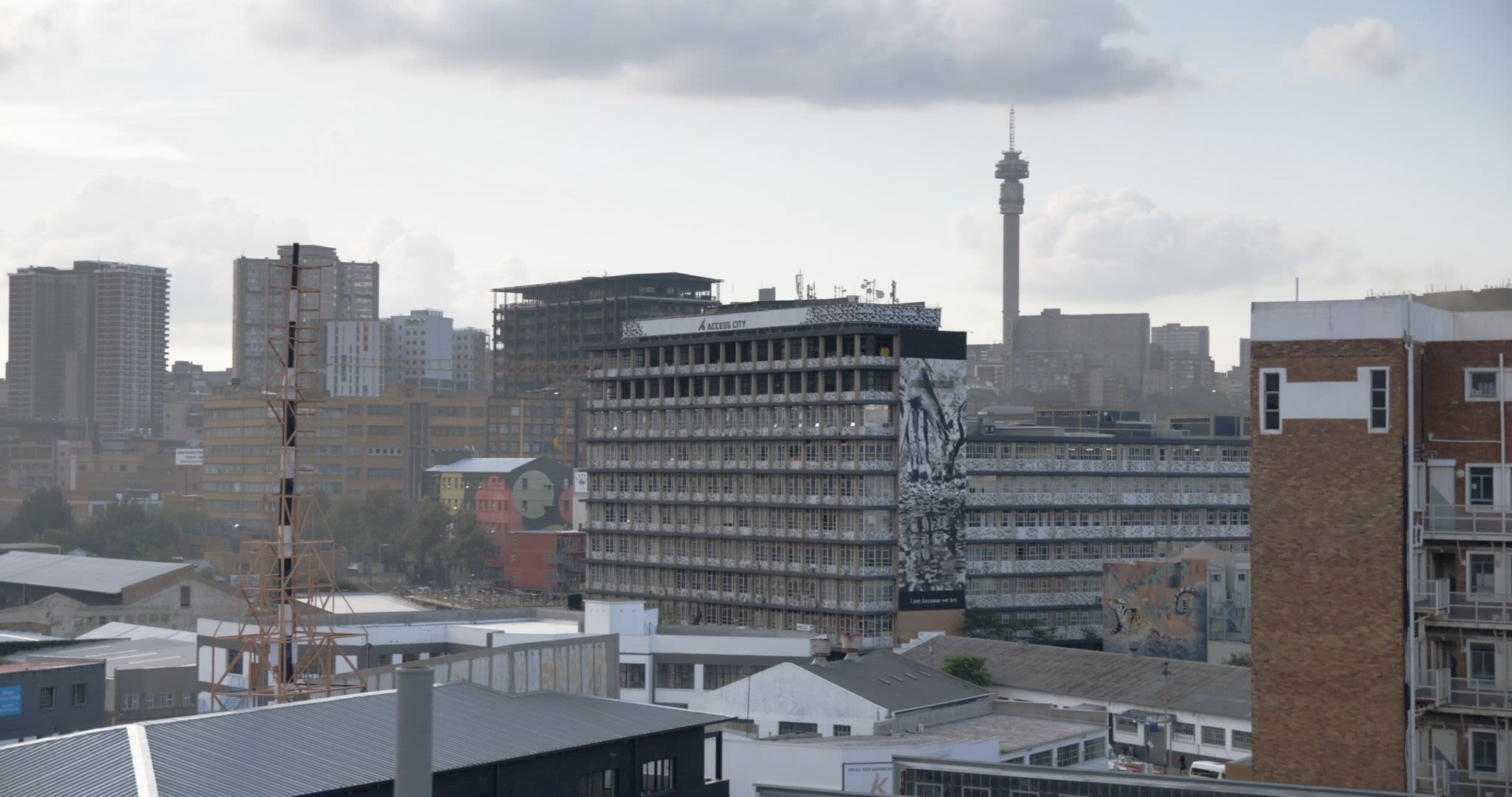Including Climate Risk in Urban Infrastructure Planning
The case of Johannesburg

Johannesburg is South Africa’s fastest-growing and most densely populated city, but it has been coping with severe climate change risks, including flooding and acute heat, in the past years. Johannesburg is located in the Gauteng Province of South Africa and has suffered from flash floods and heavy rain almost every year since 2014. This has resulted in damages to road infrastructure, bridges, properties, and stormwater drains. The city also suffers from an increase in temperature in the urban areas—the so-called urban heat island effect—leading to significant impacts on human health and well-being.
Considering the adverse impacts of climate change, it has become evident that future infrastructure development needs to contribute to reducing the city’s carbon footprint while also ensuring that infrastructure is resilient against current and future climate impacts. In fact, the city’s 2040 Growth and Development Strategy includes development priorities such as “providing a resilient, liveable, sustainable urban environment – underpinned by infrastructure supportive of a low-carbon economy.”

Climate Change Impacts in Urban Development Planning
The Development Planning Department of the City of Johannesburg, together with IISD, worked on assessing climate impacts on urban development in the Paterson Park Precinct to illustrate the importance of including climate risk in infrastructure planning and financing strategies. Undertaking such assessments also paves the way for investment in sustainable infrastructure. The Paterson Park Precinct is part of one of the city’s initiatives to improve social cohesion within the urban environment while maximizing environmental and economic benefits.
The use of Copernicus Climate Data enables the quantification of the impact of different climate scenarios, such as Representative Concentration Pathway (RCP) 4.5 and RCP 8.51 in the figures below, on the stormwater infrastructure and the buildings in the Paterson Park Precinct. Figures 1 and 2 illustrate that the variability and intensity of precipitation in Johannesburg are much greater under the RCP 8.5 scenario and will require different investments in infrastructure to mitigate the impacts of climate change.
Figure 1. Precipitation in Johannesburg under the RCP 4.5 scenario: precipitation increases in intensity and frequency
Figure 1. Precipitation in Johannesburg under the RCP 4.5 scenario: precipitation increases in intensity and frequency
Figure 2. Precipitation in Johannesburg under the RCP 8.5 scenario: precipitation further intensifies compared to the RCP 4.5 scenario.
Figure 2. Precipitation in Johannesburg under the RCP 8.5 scenario: precipitation further intensifies compared to the RCP 4.5 scenario.

The Paterson Park Precinct is part of one of the city’s initiatives to improve social cohesion within the urban environment while maximizing environmental and economic benefits.
The Paterson Park Precinct is part of one of the city’s initiatives to improve social cohesion within the urban environment while maximizing environmental and economic benefits.

The Paterson Park Precinct is part of one of the city’s initiatives to improve social cohesion within the urban environment while maximizing environmental and economic benefits.
The Paterson Park Precinct is part of one of the city’s initiatives to improve social cohesion within the urban environment while maximizing environmental and economic benefits.

The Paterson Park Precinct is part of one of the city’s initiatives to improve social cohesion within the urban environment while maximizing environmental and economic benefits.
The Paterson Park Precinct is part of one of the city’s initiatives to improve social cohesion within the urban environment while maximizing environmental and economic benefits.
Sustainable Asset Valuation of the City’s Stormwater and Building Infrastructure
An assessment with the Sustainable Asset Valuation (SAVi) methodology on the stormwater infrastructure in Paterson Park demonstrates that choosing nature-based infrastructure such as renaturalizing the river stream—a river restoration strategy intended to enhance the natural functioning and state of a river—or adding nature-based components to grey-built infrastructure provide higher returns on investment than strictly grey-built alternatives.
The SAVi assessment demonstrates that the benefit-to-cost ratio of the nature-based infrastructure options ranges between 1.7 and 4.9 per South African Rand (ZAR) invested, depending on the time horizon (20 or 40 years).
The benefits of the nature-based infrastructure that were measured include:
- Avoided costs of flood damages
- Additional water supply
- Carbon sequestration benefits
- Increased income creation due to employment
- Increased property value and related tax revenues
Under the RCP 8.5 climate scenario, the benefits from both nature-based infrastructure options become even larger, ranging between 1.5 and 5.4 per ZAR invested, because of their high effectiveness in coping with more extreme rainfall.
A full overview of the stormwater assessment is available here.
Figures 3 and 4 demonstrate temperature variations under the RCP 4.5 and RCP 8.5 scenarios. This data was incorporated into the SAVi assessment on building upgrades in Paterson Park.
Figure 3. Temperatures in Johannesburg under the RCP 4.5 scenario increase toward the end of the century.
Figure 3. Temperatures in Johannesburg under the RCP 4.5 scenario increase toward the end of the century.
Figure 4. Temperatures in Johannesburg under the RCP 8.5 scenario increase sharply and are higher than under the milder RCP 4.5 scenario
Figure 4. Temperatures in Johannesburg under the RCP 8.5 scenario increase sharply and are higher than under the milder RCP 4.5 scenario
Over the life cycle of buildings, there are significant cost savings in energy and maintenance expenditures for green buildings as compared to the current building design. SAVi also demonstrated that solar power generates a worthwhile investment for buildings in South Africa that creates a positive return, especially when taking into account rising electricity prices. A full overview of the results is available here.
Changes in temperature and the heat island effect will drive up future energy expenditures for buildings. SAVi quantifies this impact and enables the Development Planning Department to advocate for greener building standards.



Sustainable and Resilient Infrastructure Planning Includes Climate Projections
Both SAVi assessments illustrate the importance of including climate projections in infrastructure planning. They also help make the case for sustainable and resilient infrastructure: nature-based infrastructure options provide better value for money over the life cycle of the projects under the different climate scenarios.
"The customized SAVi applications—with the Copernicus Climate Data—provides a unique perspective of not only the financial considerations of infrastructure projects but also identifies material environmental, social, and economic risks and externalities simulated under different climate change scenarios. The Department of Development Planning, as coordinator of the city’s capital budgeting processes, aims to integrate this approach into the assessment and prioritization of future infrastructure projects—especially as part of the city’s 10-year capital investment plan.”







